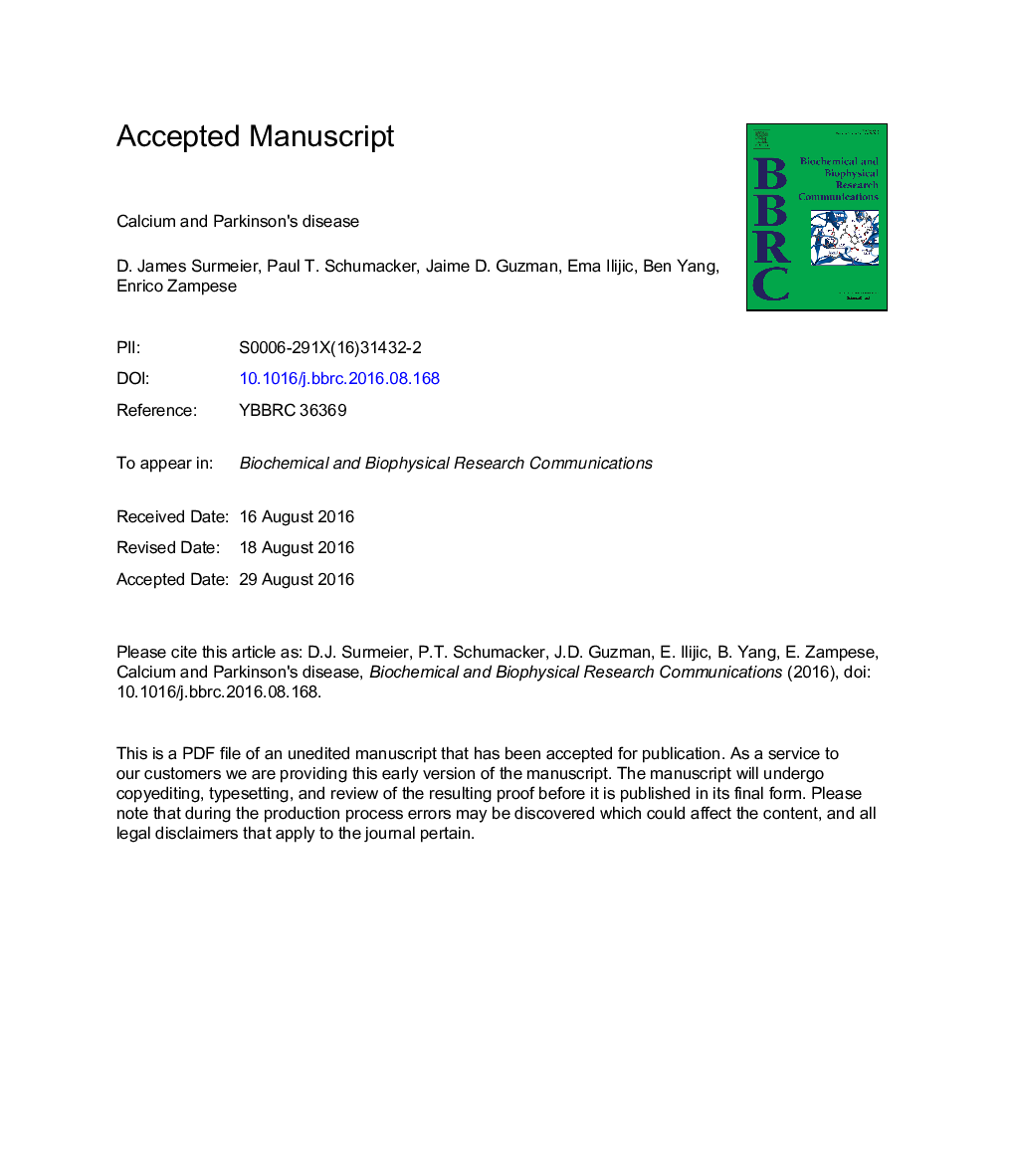| کد مقاله | کد نشریه | سال انتشار | مقاله انگلیسی | نسخه تمام متن |
|---|---|---|---|---|
| 5506417 | 1400294 | 2017 | 24 صفحه PDF | دانلود رایگان |
عنوان انگلیسی مقاله ISI
Calcium and Parkinson's disease
ترجمه فارسی عنوان
کلسیم و بیماری پارکینسون
دانلود مقاله + سفارش ترجمه
دانلود مقاله ISI انگلیسی
رایگان برای ایرانیان
کلمات کلیدی
توده سیاه، دوپامین، الکتروفیزیولوژی، میتوکندریا، استرس اکسیدان دو میکروسکوپ فوتون، اندوپلاسمی رتیکولوم،
موضوعات مرتبط
علوم زیستی و بیوفناوری
بیوشیمی، ژنتیک و زیست شناسی مولکولی
زیست شیمی
چکیده انگلیسی
Parkinson's disease (PD) is the second most common neurodegenerative disease in the world. Its causes are poorly understood and there is no proven therapeutic strategy for slowing disease progression. The core motor symptoms of PD are caused by the death of dopaminergic neurons in the substantia nigra pars compacta (SNc). In these neurons, Ca2+entry through plasma membrane Cav1 channels drives a sustained feed-forward stimulation of mitochondrial oxidative phosphorylation. Although this design helps prevent bioenergetic failure when activity needs to be sustained, it leads to basal mitochondrial oxidant stress. Over decades, this basal oxidant stress could compromise mitochondrial function and increase mitophagy, resulting in increased vulnerability to other proteostatic stressors, like elevated alpha synuclein expression. Because this feedforward mechanism is no longer demanded by our lifestyle, it could be dispensed with. Indeed, use of dihydropyridines - negative allosteric modulators of Cav1 Ca2+ channels - comes with little or no effect on brain function but is associated with decreased risk and progression of PD. An ongoing, NIH sponsored, Phase 3 clinical trial in North America is testing the ability of one member of the dihydropyridine class (isradipine) to slow PD progression in early stage patients. The review summarizes the rationale for the trial and outlines some unanswered questions.
ناشر
Database: Elsevier - ScienceDirect (ساینس دایرکت)
Journal: Biochemical and Biophysical Research Communications - Volume 483, Issue 4, 19 February 2017, Pages 1013-1019
Journal: Biochemical and Biophysical Research Communications - Volume 483, Issue 4, 19 February 2017, Pages 1013-1019
نویسندگان
D. James Surmeier, Paul T. Schumacker, Jaime D. Guzman, Ema Ilijic, Ben Yang, Enrico Zampese,
